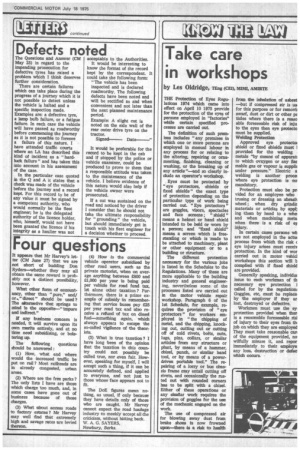Defects noted
Page 31

If you've noticed an error in this article please click here to report it so we can fix it.
The Questions and Answer (CM May 23) in regard to the impending prosecution for defective tyres has raised a problem which I think deserves further consideration.
There are certain failures which can take place during the progress of a journey which it is not possible to detect unless the vehicle is halted and a specific inspection made. Examples are: a defective tyre, a lamp bulb failure, or a fatigue failure. In each case the vehicle will have passed as roadworthy before commencing the journey as it is not possible to foresee a failure of this nature. I have attended traffic courts where an LA has described this kind of incident as a "hardhick failure" and has taken this into account in his assessment of the case.
In the particular case quoted in the Q and A it states that a check was made of the vehicle before the journey and a record kept. For this record to be of any value it must be signed by a competent authority, who would normally be the fleet engineer; he is the delegated authority of the licence holder, who, himself, would not have been granted the licence if his integrity as a haulier was not acceptable to the Authorities. It would be interesting to know the format of the record kept by the correspondent. It could take the following form: "The vehicle has been inspected and is declared roadworthy. The following defects have been noted and will be rectified as and when convenient and not later than the next planned maintenance period.
Example: A slight cut is noted on the side wall of the rear outer drive tyre on the tractor.
Signed— Date-----" It would be preferable for the record to be kept in the cab and if stopped by the police or vehicle examiner, could be produced to prove to them that a responsible attitude was taken to the maintenance of the vehicle. I believe evidence of this nature would also help if the vehicle owner were prosecuted.
If a cut was sustained on the road and noticed by the driver I consider that he should not take the ultimate responsibility for " grounding " the vehicle, but should immediately get in touch with his fleet engineer for a decision whether to proceed.




























































































